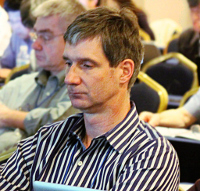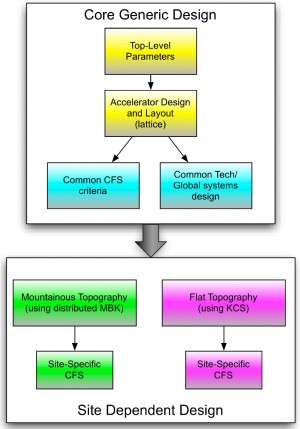The Technical Design Report (TDR) will be the culmination and final deliverable for the Global Design Effort. The technical details of the baseline that is the basis of the TDR design were established and finalised last spring. At that time, report writing began on a schedule of producing a report that is in near-final form for the technical review by the ILC Program Advisory Committee. The review meeting will be held in December at KEK Laboratory in Japan.
The process for producing the TDR uses the technical leaders as authors for each section or chapter and an experienced team of editors to edit and integrate the pieces into a coherent overall report. An interesting feature of our process is that the GDE Executive Committee (EC) has been serving as ongoing referees, since they reviewed an early ‘snapshot’ draft in July. They are continuing in this role until they sign off on the version that will be submitted for technical review. The EC has the ultimate responsibility for the report, and by performing periodic reviews while the report evolves, we expect the final sign-off in November to be relatively straightforward.
The first snapshot, produced in July, was reviewed by the EC in Melbourne, and the second more mature one was reviewed in September. The July snapshot still had missing sections, sections that had yet to be edited or sections with mixed formats, and it was only about 40 percent complete. Yet the review by the EC uncovered many issues that led to major revisions, even in the structure of the report. One challenge in writing this report is that the ILC design has gone beyond being just a site-independent design, like what was presented in the Reference Design Report in 2007. In the Technical Design Report, we address important inherent differences between mountainous and deep underground sites in terms of civil construction, access and technical choices.
The September TDR snapshot was much more complete, had undergone significant editing and was all in a common LaTeX format. The total length of the two volumes (R&D and Accelerator Design) at that time was 651 pages, which is not far from our current goal. However, despite the enormous improvements, this snapshot was still a work in progress, definitely not a final draft ready for external review. Two EC members, acting as lead reviewers for each chapter, summarised their reviews of the September snapshot in an extended online meeting for discussion. The combined review reports were then assembled and given to John Carwardine and the authors and editors, who are using them to refine the next version.
During the Arlington LCWS meeting from 22 to 26 October, we will have special TDR sessions where we will discuss some outstanding issues. Following that meeting, the TDR draft will be revised as needed and submitted the GDE EC for a dedicated TDR review meeting on 14 November at Fermilab. At that meeting, the EC will review this new version chapter by chapter, recommend any last changes and hopefully agree to ‘sign off’ on the version that will be submitted to the PAC for the technical review.
We believe the process described above is quite robust and will lead to a well-written Technical Design Report. I should emphasise, however, that the version we complete in November will not be a final version for circulation, but rather a complete version for technical design, cost and overall reviews to be carried out this winter. Following those reviews, we will modify the TDR as needed, complete final figures and publish the final report in time to officially submit it to ICFA at the Lepton Photon Conference in San Francisco in June 2013.
We are working very hard to produce a well-written TDR that will not only review well, but can serve as the basis of a final design and a construction project. We are making every effort to ensure that the TDR will have a long ‘shelf life,’ for example by having direct access to support materials through an EDMS system. This is especially important since the GDE will have completed its task and will be replaced by a new organisation having a different mandate for the future.





Recent Comments